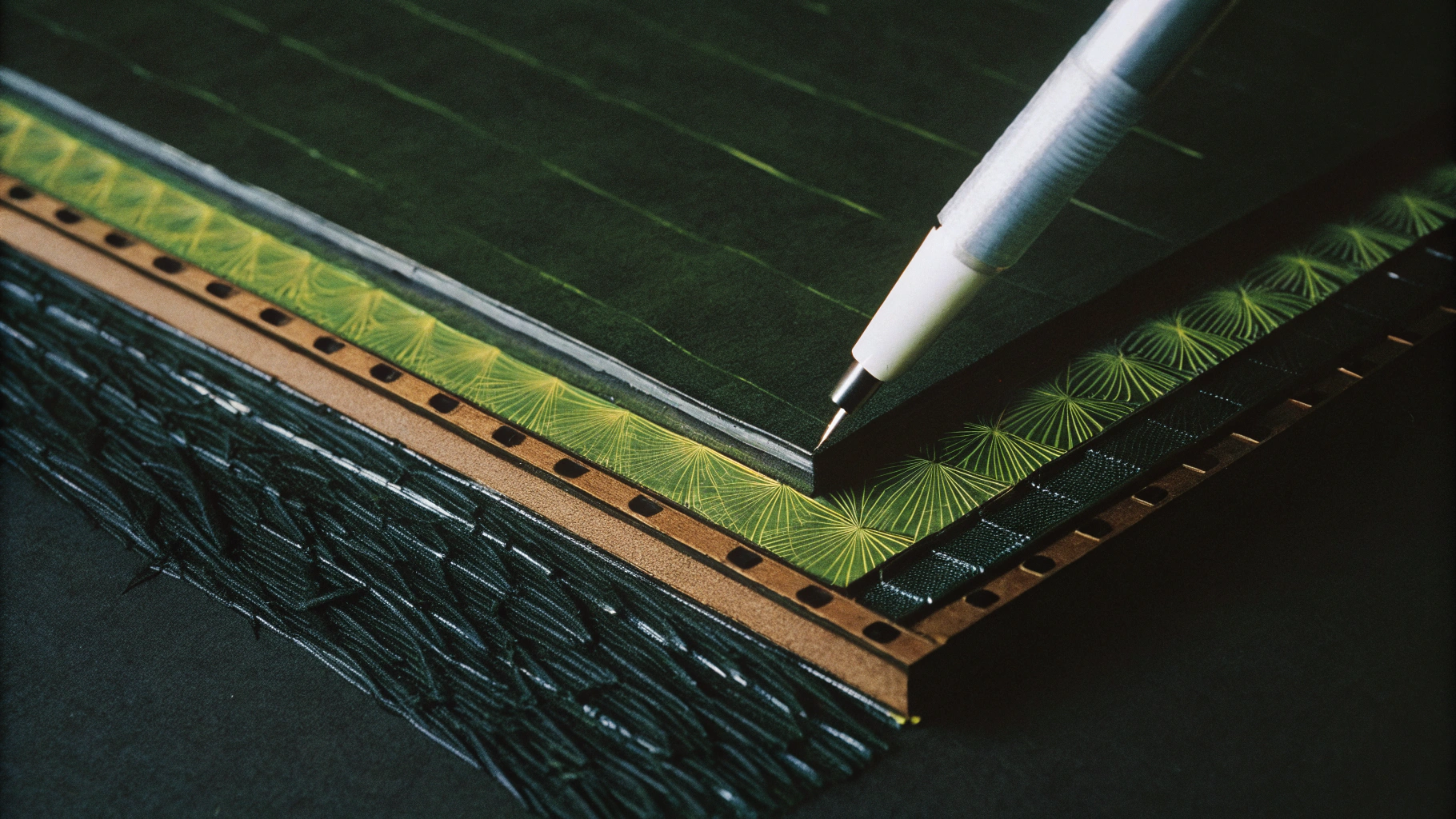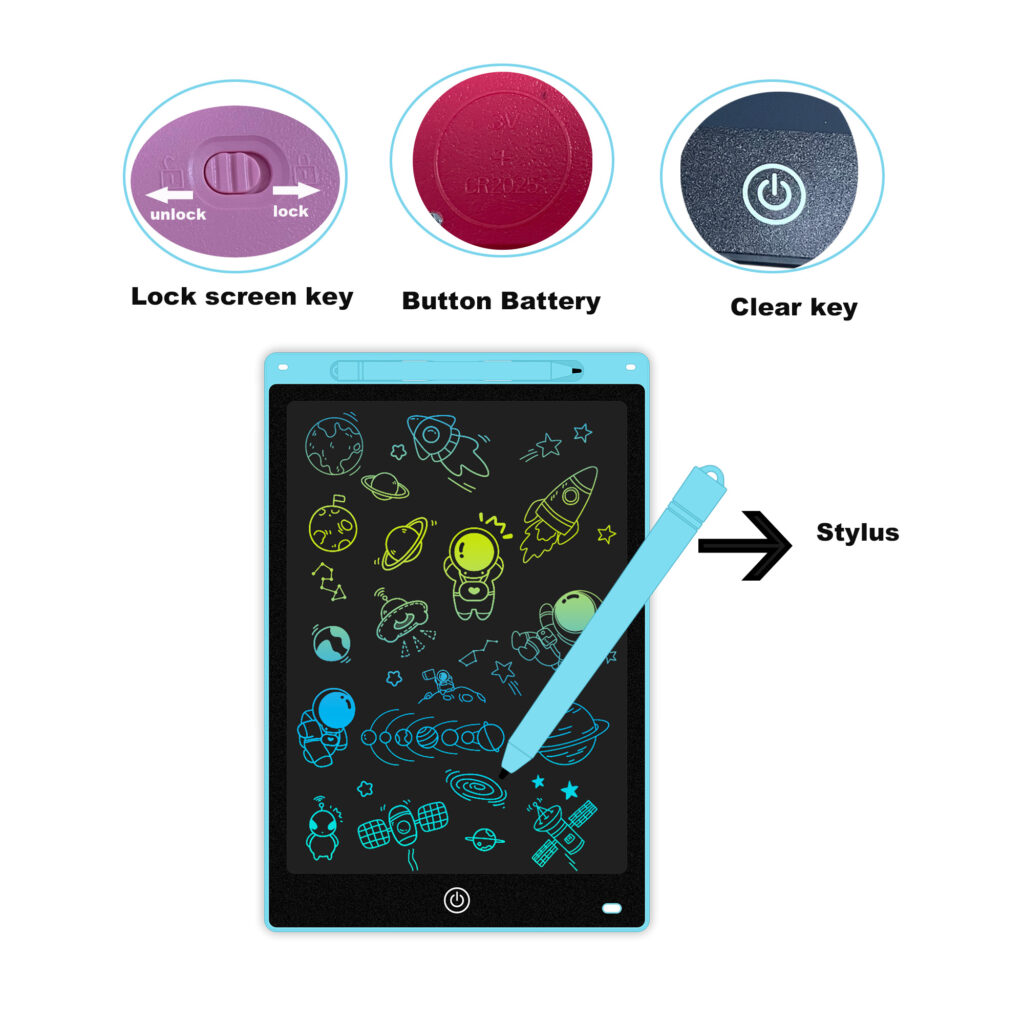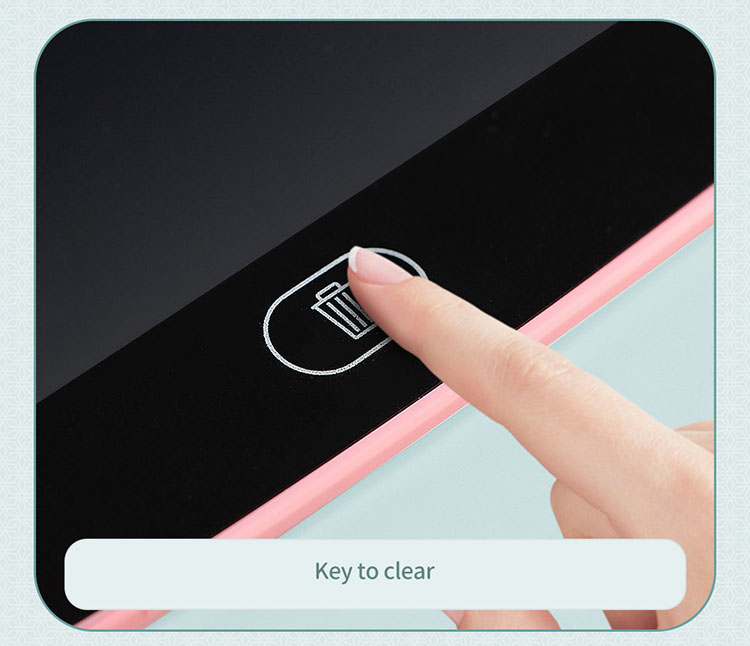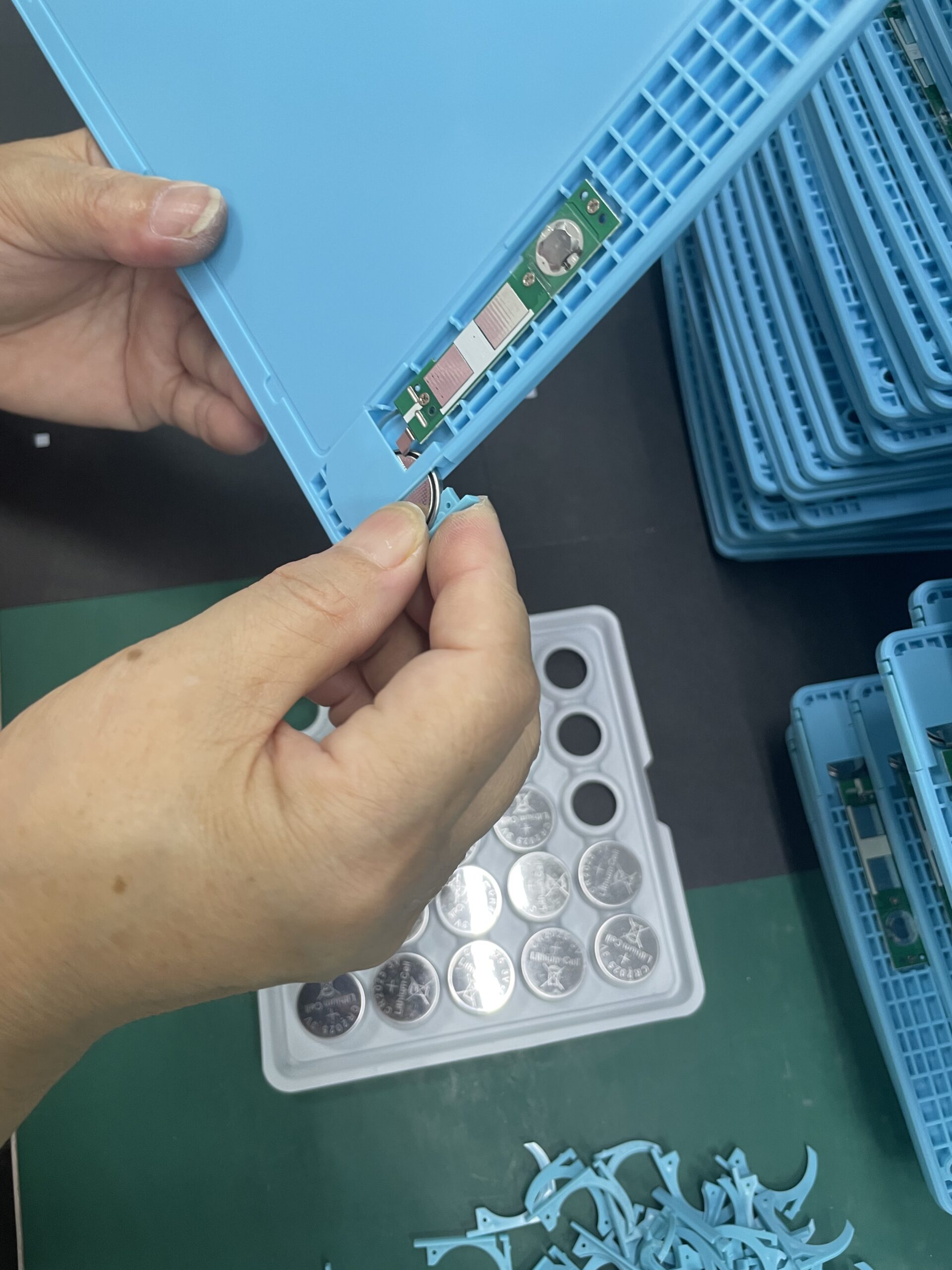Tired of wasting paper and searching for pens that always seem to be out of ink? I felt the same way until I discovered LCD writing tablets, and they’ve changed the way I take notes and sketch ideas!
LCD writing tablets work using a pressure-sensitive LCD screen with liquid crystal molecules that change position when pressed. When you write with a stylus, these crystals rotate to create visible lines by reflecting light differently. The technology is simple yet effective for creating temporary digital notes without using paper.
I remember when I first got my hands on an LCD writing tablet. I was skeptical about how well it would work compared to traditional paper. But after using it for just a few days, I was amazed by its simplicity and effectiveness. Let’s dive deeper into how these eco-friendly devices actually work.
How Does The LCD Writing Pad Work?
Have you ever wondered what’s happening inside your LCD writing tablet when you press the stylus against the screen? I certainly did, especially when I saw how crisp the lines appeared without any power!
LCD writing tablets1 use pressure-sensitive liquid crystal display technology2. The screen contains liquid crystals3 suspended between two layers. When pressure is applied with a stylus, these crystals realign, creating visible marks that appear as dark lines against the typically colored background.
The technology behind LCD writing tablets is actually quite fascinating when you look at the details. These tablets feature several layers working together to create a writing surface that requires minimal power yet delivers immediate visual feedback.
At the core of every LCD writing tablet is a layer of liquid crystals – the same technology used in LCD screens but with a much simpler implementation. These crystals are sandwiched between two substrates, usually made of plastic or glass. The bottom substrate typically contains a reflective layer that bounces light back through the crystal layer.
When the tablet is in its normal state, the liquid crystals are arranged in a way that allows light to pass through and reflect back evenly, creating the background color you see (often green, blue, or white depending on the model). This arrangement is maintained by a very small electric charge that requires minimal battery power.
What happens when you write? The pressure from your stylus disrupts the alignment of these liquid crystals, causing them to twist or realign. This changes how light passes through and reflects back, creating the dark lines you see on the screen. It’s similar to pressing your finger against an old calculator display – you’re physically moving the crystals.
Different Types of LCD Writing Technologies
| Technology Type | Power Requirements | Contrast Quality | Durability |
|---|---|---|---|
| Standard LCD | Very low (button cell) | Medium | High |
| Boosted LCD | Low (AAA batteries) | High | Medium-high |
| Advanced Reflective | Very low (solar or button cell) | Very high | Very high |
What Are The Disadvantages Of LCD Writing Tablets?
Do you sometimes feel frustrated when you can’t save your drawings or notes from your LCD tablet? I’ve been in that situation many times, especially when I created something I really wanted to keep!
The main disadvantages of LCD writing tablets include the inability to save or transfer content digitally, limited or no color options, and the all-or-nothing erase function. Most basic models can’t connect to other devices, lack backlight for low-light use, and offer no cloud backup capabilities.
While LCD writing tablets offer many benefits, they do come with several limitations that are important to understand before making a purchase decision. I’ve used various models over the years and have encountered several drawbacks that might matter depending on your specific needs.
The most significant limitation is the inability to digitize or save your work. Unlike digital tablets with connectivity features, most basic LCD writing tablets are completely offline devices. This means once you erase the screen, your work is gone forever. I learned this lesson the hard way when I sketched out a detailed project plan and accidentally hit the erase button before taking a photo of it.
Another limitation is the monochromatic display. Most standard LCD writing tablets only write in one color (usually black or dark blue) against a single background color. For someone like me who likes to color-code my notes or add highlights, this can be quite restrictive. Some premium models now offer limited color options, but they’re still far from the versatility of paper or digital tablets.
The contrast on these tablets can also vary significantly between models. Lower-quality tablets may have poor contrast, making it difficult to see what you’ve written, especially in bright light conditions. I’ve found this particularly challenging when trying to use my tablet outdoors or near a window on sunny days.
Common User Complaints
| Issue | Impact | Possible Workarounds |
|---|---|---|
| No save function | Work is lost after erasing | Take photos before erasing |
| Limited color options | Less visual organization | Use different pressure for varied line thickness |
| All-or-nothing erase | Can’t correct small mistakes | Careful planning, restart if necessary |
| Battery replacement | Environmental concerns | Rechargeable models available |
How Do LCD Tablets Erase?
Have you ever pressed the erase button on your LCD tablet and wondered how it clears everything so quickly? I used to think there was some kind of digital process involved until I learned the surprising truth!
LCD tablets erase by applying a small electrical charge across the screen, which resets all liquid crystals to their original alignment. This process requires minimal power and happens almost instantly when you press the erase button, returning the screen to its blank state without any residual marks.
The erasing mechanism of LCD writing tablets is one of their most impressive features. Unlike traditional erasers that physically remove material from paper, or digital devices that clear pixels through software commands, LCD tablets use a simple electrical principle to reset the entire screen.
When you press the erase button, a small electrical current passes through the liquid crystal layer. This current temporarily realigns all the liquid crystals back to their original position – the same position they were in before you started writing. It’s almost like resetting a switch.
I find this process fascinating because it’s both efficient and environmentally friendly. There’s no waste produced like with paper erasers, and the amount of electricity used is incredibly small – typically powered by a single button cell battery that can last for months or even years.
However, this all-or-nothing approach to erasing is both a strength and a weakness. On one hand, it provides a clean slate instantly. On the other hand, it means you can’t selectively erase just a portion of your work. I’ve often found myself wishing I could just remove one small section rather than starting over completely.
Some newer, more advanced models are beginning to offer partial erase functionality, but these typically use different technology than the basic LCD writing tablets and come with higher price points and additional power requirements.
Erase Cycle Limitations
Most LCD writing tablets are rated for thousands of erase cycles. In my experience, the quality of the erase function can degrade over time, with some tablets developing "ghost images" where traces of previous writing remain visible even after erasing. This is typically more common in lower-quality tablets or those that have been used extensively.
Do LCD Writing Tablets Use Batteries?
Have you ever picked up an LCD writing tablet and wondered how it works without constantly needing to be recharged? I certainly did, especially when mine kept working for months without any power indicator!
Yes, most LCD writing tablets use batteries, but they consume extremely little power. Typically, they use button cell batteries (like CR2016 or CR2025) that can last 1-2 years with regular use. The battery only powers the erase function and sometimes screen lock features, not the actual writing process.
The power efficiency of LCD writing tablets is truly remarkable when compared to other electronic devices we use daily. When I first got my tablet, I was surprised to learn that the battery doesn’t actually power the writing function at all – it’s only used for the erase function and, in some models, to maintain any screen lock features.
This minimal power usage comes from the passive nature of the LCD technology used. Unlike digital tablets with active displays that need constant power to maintain an image, LCD writing tablets use stable liquid crystal states that remain fixed until physically disturbed by your stylus or reset by the erase function.
In my experience using various models over the years, I’ve found that battery replacement is infrequent – typically every 1-2 years with regular daily use. Some newer models have moved to rechargeable batteries, especially those with additional features like partial erasing or backlighting.
I particularly appreciate this aspect of LCD writing tablets when using them with my children. There’s no need to worry about constant recharging or the tablet dying mid-use. It’s always ready when inspiration strikes, whether that’s for quick notes during a meeting or impromptu drawing sessions with the kids.
Battery Considerations for Different Models
| Model Type | Battery Type | Expected Life | Environmental Impact |
|---|---|---|---|
| Basic LCD Tablet | Button Cell (CR2016/CR2025) | 1-2 years | Low (needs proper disposal) |
| Enhanced Models | AAA Batteries | 6-12 months | Medium (can use rechargeable) |
| Premium Versions | Rechargeable Li-ion | 3-6 months between charges | Low (rechargeable) |
One important consideration I’ve learned is battery disposal. Since most basic models use button cell batteries containing lithium or other materials, they should be properly recycled rather than thrown in regular trash. Many electronics stores offer free battery recycling programs that I’ve found convenient to use.
Conclusion
LCD writing tablets offer an eco-friendly, battery-efficient way to write and draw without paper waste. They use simple technology that creates visible marks through pressure, erase with minimal power, and provide a practical solution for everyday notes and sketches.
-
Learn about the advantages of LCD writing tablets, including their eco-friendliness and ease of use, which can enhance your writing experience. ↩
-
Explore this link to understand the innovative technology behind LCD writing tablets and how it enhances user experience. ↩
-
Discover the science behind liquid crystals and their role in LCD technology, which is crucial for understanding writing tablets. ↩
You may also be interested in:
Contact Us
Phone
+86 18975761579Website
ruiyiboard.comAddress
Shenzhen Longhua, Guangdong, China
Shenzhen Ruiyi Plastic Products Co., Ltd. is a professional manufacturer focused on eco-friendly writing products since 2016.
Our mission is to provide paper-free, ink-free, safe and environmentally friendly electronic writing solutions.





